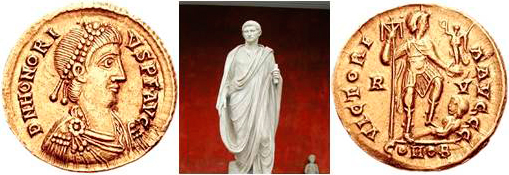
The Emperor’s New Clothes
Power Dressing in the Roman Empire from Augustus to Honorius
Project by Berit Hildebrandt
This project will explore changes in the costume of the Roman emperor, his family and his court. My hypothesis is that we can track the development of an imperial wardrobe, which follows the gradual acceptance and consolidation of autocracy, from the plain woolen toga of the ideal princeps to the luxurious purple silks of the monarch. My aim is to highlight the continuities and breaks as well as the idiosyncrasies that occurred during this process by taking into account written as well as archaeological sources.
In terms of status representation, the early Roman emperors walked a tight rope between conforming to the supposed frugality and uniformity of their ancestors and being the rulers of the Roman world. For historical reasons they had to avoid allusions to monarchy and behave as "first among equals" in their interaction with their senatorial peers. Changes in status display through clothes therefore mirror, I argue, the changing perception of the position of the emperor within the social hierarchy.
This project will cover the time from the first princeps, Augustus, to the emperor Honorius (1st century BCE-5th century CE). In particular it will focus on the representation of "good" vs. "bad" emperors as the discourses surrounding them are highly ideologically charged. This will help to define the turning point(s) when the discourses changed and also “good” emperors were allowed to represent their status visually through precious clothing. I believe that this indicates that the position of the emperor at the top of the social hierarchy was now openly acknowledged and their corresponding status representation considered appropriate. Thus the project will shed new light on the political and institutional history of the Roman Empire through the study of imperial dress and representation.
